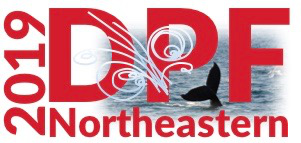Speaker
Description
A goal for hadron and jet calorimetry is a resolution scaling better than σE/√E < 20%/√E, with a goal of σE/E<3% at 50 GeV, in order to identify and separate W and Z decays to jet-jet with a 2.5-3σ confidence in the separation. The jet-jet decays have 5-6 times the rate of W,Z decays to leptons and greatly increase the ability to search for BSM (Beyond the Standard Model) physics. Dual Readout Calorimetry measures scintillation light and Cerenkov light on the same hadron shower to correct the jet energy – a form of “compensation” for hadron and jet energy measurements. Dual Readout with parallel scintillator fibers and quartz fibers shows promise for future experiment.
However the parallel fiber design has inherent limitations. These limitations include unavoidable constant terms from scintillating fiber light attenuation and radiation damage with depth, punchthrough noise in the readout, difficulty making fully projective towers over (θ,φ), streaming down the fiber holes, radiation damage to plastic scintillator fibers with no convenient or cost-effective radiation resistant alternatives, no convenient longitudinal segmentation for tagging large longitudinal fluctutations nor a separate compensated high resolution e-m front end for the photon component of incident jets, higher costs, and others as described in the proposal. At present, no parallel fiber dual readout prototype has an energy resolution that is predicted as possible with the general dual readout technique ~18%/√E, due in large part to the inherent limitations.
We extend parallel fiber dual readout to Dual Tile Readout sensors, applicable to future experimental requirements in many Frontier areas (Energy, Intensity, Cosmic), with superior energy resolution, and with the possibility of radiation resistant ionization tiles (inorganic scintillators, Si, LArgon) unlike fibers. Monte Carlo (MC) studies are used to study designs of prototype tile dual calorimeters using Fe, Cu, Cerenkov tiles(Quartz, UVT lucite, Teflon AF, water, and aerogel tiles) and scintillator tiles(Plastic; novel rad-hard hydrogenous tiles), including an integral Cerenkov-compensated e-m front end using Pb and W tiles.
MC studies are extended to other tile types appropriate for dual readout and able to extend to multiple readout with 3 or more types of tile radiation sensors with different responses and/or higher contrast signals to showers. These sensors include tiles with low refractive indices (aerogels), transition radiation “tiles”, secondary emission tiles sensitive to ions and low energy protons, hydrogenous vs non-hydrogenous ionization-sensing tiles, and neutron sensing tiles. These improve dual readout and lead to even more improvements to compensation by extending to triple or more readout. Of special interest is application of dual or multiple readout to high granularity particle/energy flow calorimeters, not possible with parallel fibers. Such tiles could be added to CALICE calorimeters, upgrade calorimeters for ATLAS and CMS Phase and groups studying future machine (ee,pp,ep) detectors, b-physics experiments, tagged νe beams, and space-based calorimeters. By extending dual readout compensation to tiles with radiation resistance, good energy resolution calorimeters more resistant to high radiation damage (and tiles are more easily replaced than fibers) may result. Compensated calorimeters with higher rate/time resolution could result.




